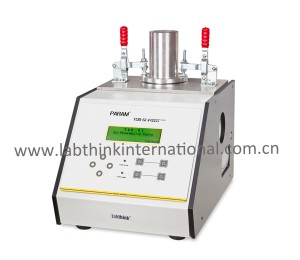Air resistance test for paper (Gurley method)
The air resistance of paper may be used as an indirect indicator of Z-directional fluid permeance, as well as other variables such as: degree of refining, absorbency (penetration of oil, water, etc.), apparent specific gravity, and filtering efficiency for liquids or gases. Air resistance is influenced by the internal structure and also the surface finish of the paper. Internal structure is controlled largely by the type and length of fibers, degree of hydration, orientation, and compaction of the fibers; as well as the type and amount of fillers and sizing. The measurement of air resistance is a useful control test for machine production; but due to the number and complexity of factors outlined above; careful judgment should be used in the specification limits for air resistance.
TAPPI T460 Gurley method is used to measure the air resistance of approximately 6.45 cm² (l in²) circular area of paper using a pressure differential of 1.22 kPa. The recommended range of the liquid column instrument is from 5 to 1800 seconds per 100 mL cylinder displacement. For more impermeable papers the time requirements become so excessive that other techniques are preferable. This method measures the volume of air that passes through the test specimen, along with any possible leakage of air across the surface; therefore it is unsuitable for rough-surface papers which cannot be securely clamped so as to avoid significant surface and edge leakage. For a similar method of measuring air resistance that tests paper at a higher pressure (approx. 3 kPa), and has higher resolution in measuring smaller air volumes, refer to TAPPI T 536. For a method of measuring air permeance at pressures up to 9.85 kPa, using both smaller and larger test areas, refer to TAPPI T 547.
TQD-G1 Air Resistance Tester adopts two methods to measure the air resistance of paper:
Method A
Providing a constant air flux going through the specimen vertically, the air permeability could be obtained by measuring the pressure difference.
Method B
Providing the constant pressure difference between two sides of the specimen, the air permeability could be obtained by measuring the air flux through specific area in the certain time



